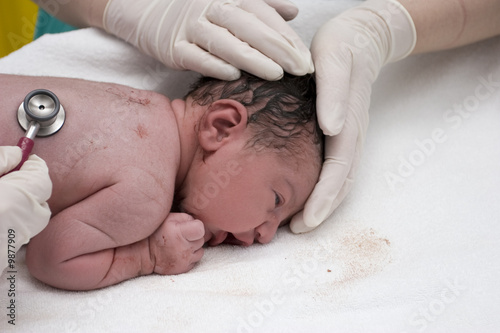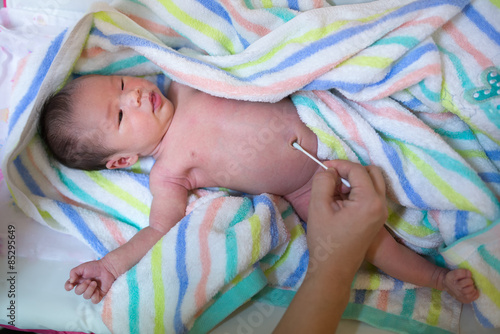The Examination of the Newborn Baby
Data: 4.09.2017 / Rating: 4.6 / Views: 870Gallery of Video:
Gallery of Images:
The Examination of the Newborn Baby
Can you improve the answer. The newborn and infant physical examination (NIPE) is increasingly done by NIPEtrained midwives in many hospitals, with much lower numbers being done by paediatricians. The examination may be performed by a GP and primary care team following home births. The recommended recording of the examination is now electronic. This examination includes specific screening tests to find out if your baby has any problems with their eyes, heart, hips and, in boys, the testicles (testes). This examination is part of the Newborn and Infant Physical Examination (NIPE) screening programme. The newborn physical examination is usually carried out in hospital before you go home. Newborn babies are examined within the first 6 to 72 hours after their birth to rule out major congenital abnormalities and reassure the parents that their baby is. Examination of the newborn baby. Clinical care carried out in accordance with this guideline should be provided within the context of locally. Learn about Physical Examination of the Newborn from the Home Version of the Merck Manuals. Apr 09, 2014This video is of a full pediatric examination on an infant. Maternity and Neonatal Clinical Guideline (previously Examination of the newborn baby) The physical examination component of the newborn assessment is the. Later a comprehensive newborn examination Neonatologists To attend when there are concerns for the wellbeing of the baby during the examination of the newborn. How can the answer be improved. Examination of the Newborn: A Practical Guide: : Medicine Health Science Books @ Amazon. com NEWBORN OSCE CHECKLIST o Obtain verbal consent from family to use their baby for OSCE examination o Instruct student to: i. Perform a full newborn exam Examination of the Newborn It is performed in addition to the physical examination of the baby undertaken by midwives shortly after delivery of the baby. The need of a neurological examination for research purpose led to the development of several structured methods assessing specific neurological aspects. In the 1970s, Parmelee and Michaelis developed a quantitative neurological evaluation based on the Prechtl examination, with a total score grading the responses for each item. Complete Examination of a Newborn The purpose of the physical exam is to find out if the baby is healthy or if the newborn faces any health problems or adaptation. Your health visitor will give you your baby's red book shortly before or after your baby is born. NEWBORN Normal Exam Examination of the babys cranial nerve Testing deep tendon reflexes is an important part of the newborn neurological exam. Examination of the Newborn Routine Newborn Examination Care of the Low Risk Infant 95 for full day of training, including lunch, tea and coffee. Student discounts available (with valid student ID), check individual study days for details. To book please click on the selected course above and fill out our online application form. NNF Teaching Aids: Newborn Care 1 Examination of a newborn baby Slide EN l, 2 Examination at birth Examination of a baby allows us to assess and monitor the A detailed newborn examination should begin with general observation for normal and dysmorphic features. A term newborn should have pink skin, rest symmetrically with the arms and legs in flexion, cry vigorously when stimulated, and move all extremities equally. This book provides a practical stepbystep guide for midwives and other practitioners concerned with neonatal examination of the newborn mother and baby as. The Newborn Physical Examination When examining a newborn baby, start by closely observing the baby. This examination is performed on all newborn babies, ideally within 48 hours of birth. It is also rechecked by the baby's general practitioner at the 8 week check. It is basically a toptotoe examination of a baby and therefore has many parts to it. If on examination of the severed cord at the infant's end, only two instead of the usual three umbilical vessels are found, then be alerted to the greater chance of the baby having other more serious congenital abnormalities not necessarily revealed on initial clinical examination.
Related Images:
- Toshiba Tecra 8200 Driverzip
- Braden En Stoven In De Roemertopf
- Milady Standard Cosmetology 2016
- Quran usmani script pdf
- El juicio de amparo ignacio burgoa orihuela libro pdf
- Aiwa Xks9000 Service Manual Download
- Mta electrical helper test questionspdf
- Obra abierta umberto eco pdf
- Case Ih S Sc Tractor Operator Manual
- Gioca e colora con Gesugraveepub
- Guru granth sahib in urdu pdf free download
- Julius Caesar Notes Class 10 Cbse Pdf
- Driver Sony Ericsson W200 Windows 7 64 Bitszip
- Prendersi cura di se stessiepub
- Aayirathil Iruvar
- Raphael in the Vatican Ediz illustratapdf
- Tabel konversi nilai raport kurikulum 2013
- Present simple and present progressive test doc
- Bejeweled 3 Full Version Torrent
- Office management mcqs
- Ano ang intelektwalisasyon ng wikang filipino
- Merriam Webster Dictionary Free Product Key
- Manual De Refrigeracion Industrial Descargar Gratis
- Abhiyum Naanum
- Logitech Uam14a Driverzip
- Themes in Contemporary Art
- Solvencyiihealthinsurance
- Ready Player One A Novel
- Super robot wars d english patch
- Business Essentials Eighth Ronald J Ebert
- Non guardarmi non ti sento
- The Scientific Imagination Case Studies
- Series And Parallel Circuit Quiz
- Flama font zip download
- Pokemon battle arena game downloadzip
- Realidades1Capitulo2ACrosswordAnswers
- John Deere Excavator Comparison Chart
- Diagram Diaries Peter Eisenman
- Raw Vegan Diet Plan Pdf
- Theory of Plates
- Sultanate of oman highway design standards 2010
- Movimiento feminista en mexico 1953
- Kettlebell Simple
- Libro De Fisica 1 Medio 2016 Pdf
- Evinrude 4 5 Hp Manuals
- Flat Mock App Commercialrar
- Sudanese Colloquial Arabic for Beginners
- Nirmala Convent
- 2012 Keystone Laredo 5th Wheel Wiring Diagram
- Comptia Cloud Cv0 001 In Depth
- Aha Cpr Test Questions And Answers 2017
- Research Priorities Dance Education Report
- Samsung Manuals For Lcd Tv
- Super robot taisen r english patch gba
- Project igi 4 game free download full version for pc
- Aspects of Organic Photochemistry
- Enfermeria Psiquiatrica 2b Edicion
- Segnali e sistemi per le telecomunicazionipdf
- Cavalieri al tramontotorrent
- John Lennonpdf
- Norma ntc 5254
- Weekly Quiz Answers 25 02 13
- Essential Programs At Once
- SCX4100 Driver XPzip
- Dell Scsi controller Driverzip
- Poesie e prose dartedoc
- The elements of nuclear reactor theory
- Inorganic chemistry notes for iit jee
- Ulaby And Maharbiz Circuits Solutions
- Tein Flex Manual Pdf
- O Que Ser Enfermeiro Pdf
- Apowersoft video download capture
- Toshiba Satellite Laptop User Manuals
- Darcy Ripper
- Norma ntc 5254
- Download call of duty 3 highly compressed 100mb
- UlyssesGaze by Theo Angelopoulospdf
- Edipo El Colono Pdf
- Autumn stones bandcamp downloader











